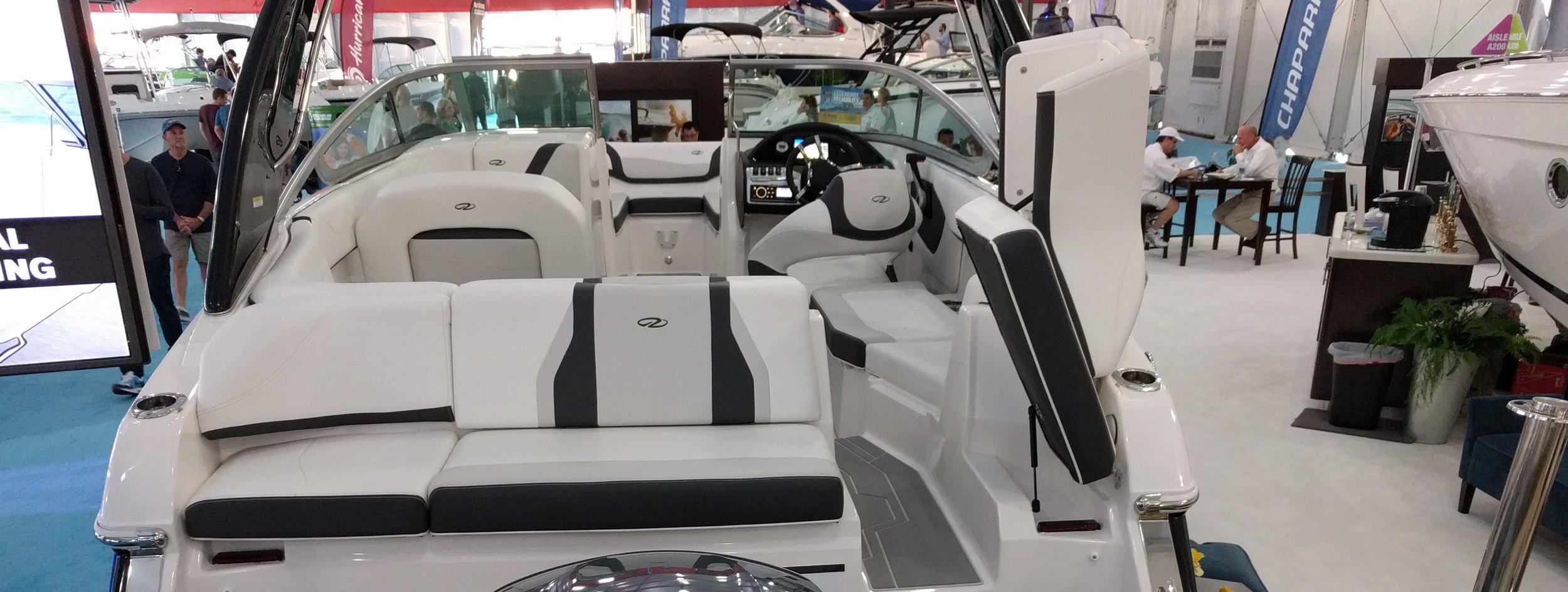The Boat Show: And the Small Manufacturers
I remember as a kid going to the boat show was a chance to see the latest and greatest boats on the market. There was always something interesting to see, from the new engines to the performance boats. It seemed like in the 80s and 90s even small manufacturers had at least a few boats on display. But in the 2000s, the boat shows kind of changed. Slowly, the performance boat market wasn’t represented nor were other independents. What happened? One serious change was the way the marine industry consolidated, with major industry players like Brunswick and Genmar acquiring brands and growing their main ones. At one time, in the early 2000s, Brunswick and Genmar had about 30 brands between them and were generating just over 1 billion dollars in revenue each. But the most interesting part is if you combined those two behemoths, they still only accounted for less than 50% of the market. Small boat companies were still doing really well and representing a large part of sales.
The Market
When it came to boat shows, the floor of the show ended up being bought by the biggest companies and slowly but surely, the small guys were either priced out or not part of the marketing effort. In a 2003 interview for “Boating Industry” Irwin Jacabs, then CEO of Genmar, said that he was thinking of hosting boat shows for Genmar brands only and not even participating in the major circuit. (2003, Brunswick vs Genmar). That is effectively what happened. If you were new to boating and you went to the boat show to see what was available, from the early 2000s on, you would be hard pressed to find a performance boat manufacturer or any small builder represented, considering Brunswick and Genmar owned most of the floor.
The Miami International Boat Show is one of the best boat shows in North America for the number of exhibitors and the range of boats. Great product launches happen in Miami.
Dustan McKoy, the CEO of Brunswick at the time and Jacobs were highly competitive, with both companies fighting to gain some of the market that was on the table. Jacobs mentions in the Brunswick vs Genmar article about how they were always lookng to fill different parts of the market “the white space” with unique products, while both companies and the industry in general, touted the benefits of advanced manufacturing that would kill off most of the small guys. (2003) The premise being, new ways of building boats was far superior and the quality and other factors would just supercede independents. That’s not actually what happened. If you take a close look at a Brunswick product like a Sea Ray or Bayliner from the 2000s or a Genmar boat like a Larson or Glastron, quality wasn’t there strong suit. But they sure could pump them out fast.
Fast forward to 2009 and the boating industry still had many independent boat companies, some survived and some didn’t but the industry was somewhat unique in that it didn’t consolidate as much as the experts might have predicted, or rather the consolidation didn’t lead to complete domination. However, the recession and the competition from majors was enough to shake the smallest players. And it became even tougher to market and compete. If you weren’t at the boat shows and didn’t have a dealer network, or even one dealer, you were going to have a tough time selling. Genmar itself declared bankruptcy, a poor strategy and lack of insight into acquisitions along with the recession saw there end. Many of the memorable Genmar brands were acquired by different holding companies and are around today. Consolidation moved forward and it made more sense for engine manufacturers to be the holders of boat companies; an advantage Brunswick always had over Genmar. Today we see that with Yamaha as well, who now owns and manufactures several brands, primarily in the fishing and family recreational segment.
The Floor
It makes sense for engine manufacturers to make boats. The advantage is margin, dealer network and marketing.
The Future
One thing that is for sure is the high end of the performance market: the large offshore boats, mid and large size cats, performance orientated center consoles and the performance fishing boats are selling really well. And, you see many independent builders thriving in those markets. Some are part of medium size holding companies while others are truly indpenedent. It is so hard to mass produce fiberglass boats, even Brunswick is challenged by the market and their product focus, recently announcing their wish to sell Sea Ray, formerly their halo brand. The boat industry has always been unique that way, you can still buy a boat from a small shop that is far better quality and design than any major builder can do. If you innovate and push design, there always seems to be a market for you. But, the small builders are up against the big marketing machines of the industry and too often new boaters are exposed to boating by means of a 4 passenger PWC, a bathtub looking mini jet boat with a tower on it or a floating dock marketed as a “pontoon boat.”
When you look at what’s out there, as a performance minded boater and someone who just appreciates good design in general, it’s appalling how stagnant the industry is. Recreational boats have been at a near standstill innovation wise compared to other industries.
Innovation in modern family boats is seeing how many different seating arrangements you can jam into a small space. Nobody actually stands back and considers that most of the seats are in a bad position and putting 4 people in the bow isn't necessarily smart.










